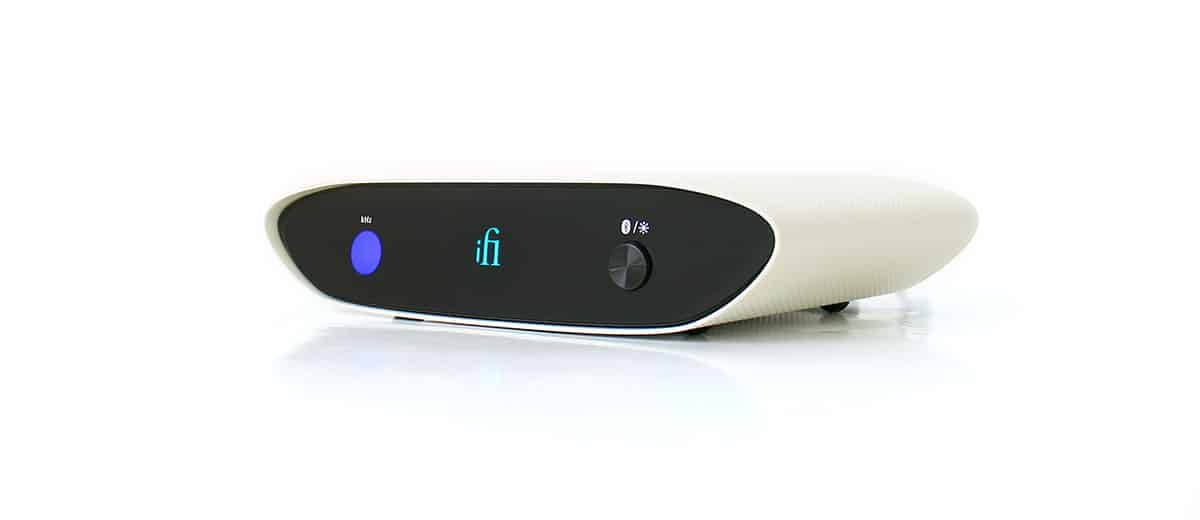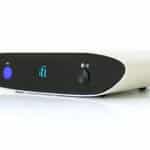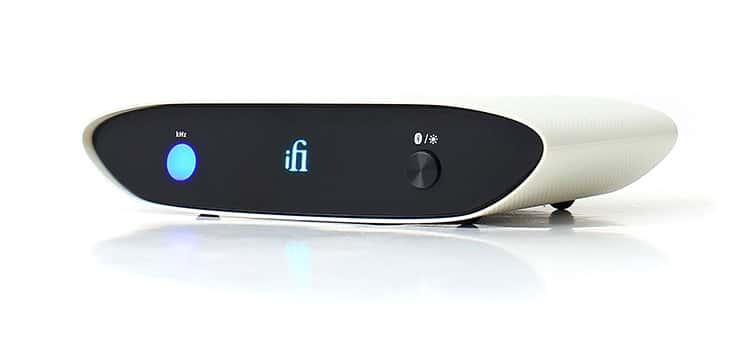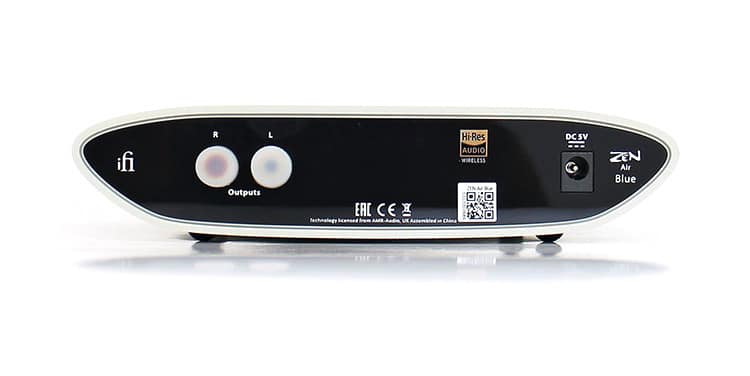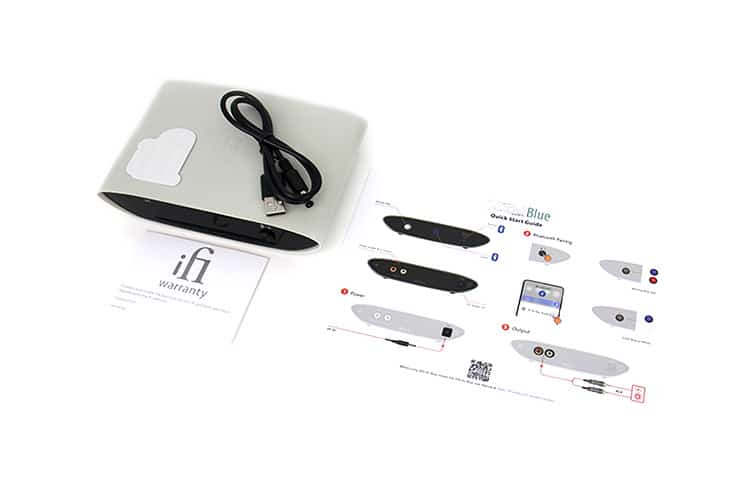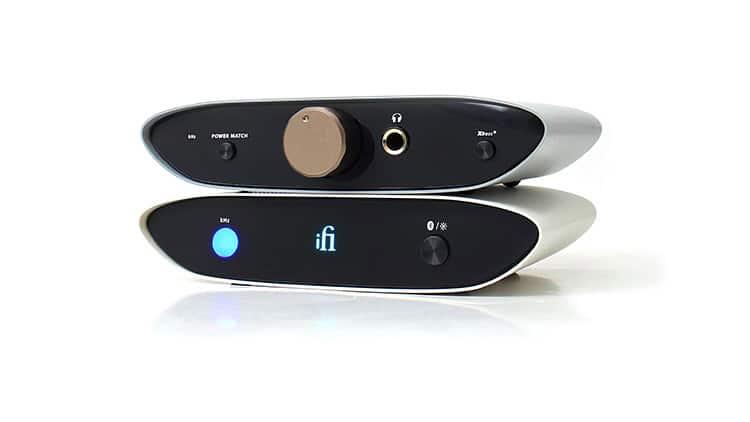Today we review the iFi Audio ZEN Air Blue which is a Qualcomm-powered desktop HD Bluetooth streamer capable of LDAC and LHDC decoding. It is priced at $99.
Disclaimer: We received this sample in exchange for our honest opinion. Headfonics is an independent website that does not have any affiliate links. Thank you for the opportunity, iFi Audio.
More information about iFi Audio products that we have previously covered on Headfonics can be found by clicking here.
Please keep in mind that this post adheres to our most recent scoring guidelines, which you can find here.
There is an abundance of Bluetooth gear out there and somehow it has seeped into the audio world with aplomb.
One audio company that is very much focused on Bluetooth is iFi Audio with both portable and desktop products alike such as the GO blu and the NEO iDSD.
Their recent budget Air series now has a dedicated BT streamer called the ZEN Air Blue which is a simple desktop Bluetooth receiver and DAC with a single analog RCA line output.
The one interesting factoid iFi Audio throws into the mix is a priority of sound quality over everything else, even over Bluetooth. So, this seems the main point of interest with this particular device.
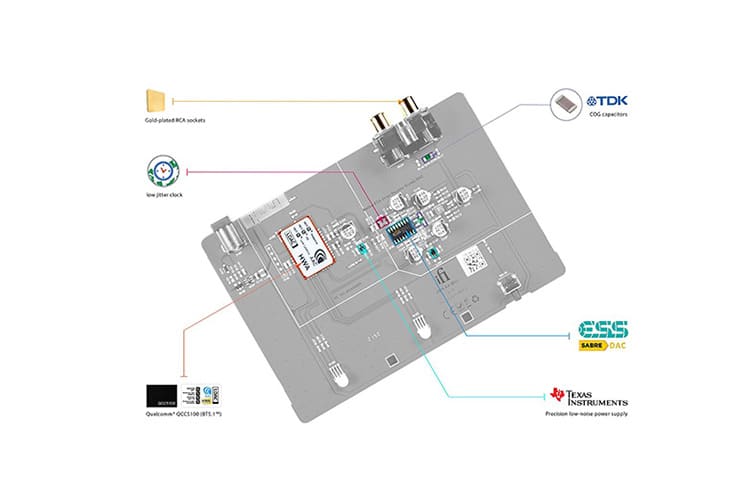
Tech Highlights
One of the major claims iFi Audio makes about the ZEN Air Blue is that they designed the circuitry to avoid the average 40% sound quality loss over Bluetooth versus a wired connection.
That is a general sound quality loss over a Bluetooth transmission which has improved greatly in the past couple of years, especially since the introduction of LDAC.
The Qualcomm QCC5100 series chip handles all the incoming codec and sits on a separate board mounted on the main board and isolated. An observation made is that iFi Audio does not specify in their literature which chip, in particular, they use because there are about nine 5100 series chips out there.
But all one has to do is play detective and the one clue that leads me to believe the ZEN Air Blue chip is the QCC5125. In particular, the 5.1 Bluetooth specification since the 5125 is the only chip within Qualcomm’s 5100 variant list that runs on that particular radio. All the other 5100 series chips run on either 5.0 or 5.2 and the QCC5171 in particular runs on a 5.3 radio.
If you look at the ZEN Air Blue circuit board you could clearly see a neat arrangement of components. For example, the Bluetooth receiver chipset is isolated from the rest of the circuits and every component seems neatly placed and the components seem fairly segregated.
An ES9023 DAC handles the ZEN Air Blue digital to analog conversion and is the same chip used on the higher tier ZEN blue. A TDJR low jitter clock is also thrown in the mix along with a Texas Instruments low noise power supply and TDK COG caps to maintain a low noise floor.
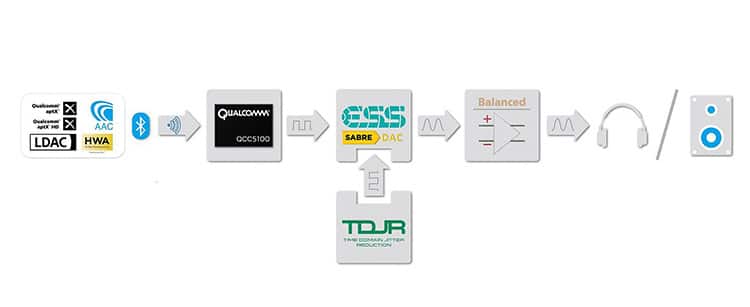
BT Codec
The ZEN Air Blue runs a plethora of Bluetooth codecs right out of the box but iFi Audio also states that others can be added at a further date with firmware updates and as they come out.
Now I’m just going to list all the codecs here and you judge for yourself if the ZEN Air Blue could run into compatibility issues far as codecs with a particular piece of gear you have and if it will run and play well on the unit.
The codecs are aptX including the original, the HD variant, and Adaptive as well as low latency types. LDAC and LHDC/HWA also run plus of course the more common SBC and Apple’s AAC codec. That’s practically every common consumer Bluetooth codec out there.
Design
The rounded trapezoid design is here to stay I guess. It seems iFi Audio is keen on keeping this shape and it seems to be their trademark design. However, the ZEN Air Blue gives up the metal shell and has been replaced with one made of a polymer material which is slightly less robust.
The ZEN Air Blue front and back panels are glossy black and are basically fingerprint magnets. It’s also prone to micro scratches and scuffs so if you get one keep a micro cloth handy because it’s the only method of cleaning the two panels I found that does not mar up the surface.
One thing that I find rather unorthodox about the air series components and the blue is the variation of colors being used on the outer shell. If you stack all the AIR components it will look mismatched in color because every component is different in color.
Perhaps that was the look iFi Audio was going for. Some will love it but not everyone will I bet. One thing I did notice is that the colors are soft and are calming tones which are in line with a concept that carries a name like ZEN.
The ZEN Air Blue design also screams simplicity since there’s only one pairing button upfront with the bit rate and iFi Audio backlit format indicators, the RCA connections with a DC power socket on the rear panel and that’s it.
Power Requirements
The ZEN Air Blue runs off a minuscule amount of power. It uses a DC 5-volt feed and practically any phone charger will be fine.
But the unit has no power on and off button so it remains on or on standby mode all the time. The ZEN Air Blue cycles for a couple of minutes searching for a nearby recognizable connection and it locks in and lights up the front indicators. If there’s no signal present after a few minutes the unit goes dark and enters standby mode.
The unit runs cold all the time so there’s no need to worry about leaving the unit on all the time and since it only draws 2.5 watts max you need not worry about the utility bill either.
Packaging & Accessories
Packaging is plain and simple and is mostly made with white printed recycled cardboard. I recently found out that iFi Audio is an eco-friendly company and that’s why they use a rather plain packaging ensemble. It explains the simple but utilitarian product presentation.
The packaging is what I call simple but effective. You get an instruction manual plus a warranty card and a USB-A to what I think is a 5.5mm x 2.5mm DC plug to power up the air blue but there’s no power adapter included.
Sound Impressions
Most of the listening was done on a PC feeding a FiiO BTA30 transmitting to the ZEN Air Blue, using Foobar and high-quality FLAC files plus some DSD files. Some listening sessions were done off my mobile device which presently runs a custom ROM and both pairings ran on LDAC codec.
When I fed the RCA into desktop amplifiers which were mainly the ZEN CAN, the Schiit Asgard, and the Topping A90 I felt the performance was very close to a direct feed from a digital DAC. Each amplifier complimented the other by producing clean musical tones with a good sense of naturalness.
The single RCA out at 2.1 volts manifested a high dynamic range that seemed vivid, lively, and practically unveiled especially in the high frequencies curing a common issue with previous generation Bluetooth sound devices. It also sounds as if the output voltage was higher than the listed value.
The ZEN Air Blue noise floor seems very low. Distortion levels also seem low and you get a good sense of the dynamic range that was only possible over wires until now.
The only aspect that I found that negatively affects the sound quality is the soundstage. Although it seems fairly well defined it has a bit of smear and sometimes pinpoint locality is not as well defined compared to a wired direct digital source.
Other than that, most other elements like frequency response and bidirectional extension, dynamics, and noise floor were all at acceptable levels and produced with a high level of quality.
Wireless Performance
The ZEN Air Blue has an internal antenna and there’s no socket for an external one either. The range you could say is less than for example what you get with a ZEN One Signature DAC but it is still not bad.
You get at least 25 feet of range in a straight line of view using a mobile device which is still a good usable distance. It does go down a few feet on LDAC which is normal.
If you remain within range the signal remains solid. In an ideal scenario, the ZEN Air Blue would sit by a home theatre or home audio setup, and the listener would sit or move around the same area feeding the ZEN Air Blue from a mobile device or a tablet.
I did surround it with some of the iFi Audio components that have a similar stackable design but are made of metal like the original ZEN Air DAC and the ZEN CAN see if that configuration would reduce the reception range and it didn’t seem to present any issues for the ZEN Air Blue.
The ZEN Air Blue is very easy to pair initially and it locks on quickly to a familiar signal. It seems to quickly awaken from its slumber and connect within seconds. I never experienced any weird dropouts or disconnections either. It seems to run very stable and lock on solidly to a paired source.
Latency
This is a tricky area to judge since there are many codecs and scenarios involved. So, there’s no telling if the noted latency is coming from the codec, the source Bluetooth device, or the ZEN Air Blue itself.
So, what I did was force kick my gear into Low Latency aptX, and of course, there was no lag and everything seemed to be synchronizing well.
The good and bad news is that the codec runs similar in sound quality to Adaptive aptX but it’s still not LDAC quality level. To me for a basic TV movie watching the sound quality was fine so you could just switch codecs to choose a low latency one with some devices if you run into latency issues with a particular codec.
The ideal codec for the best latency and sound quality to use would be LHDC which can do 600k bit/s versus LL aptX which does a max of just 384k. However, this particular codec is not being used much out there though seems the ZEN Can Blue would handle that codec just fine.
Click on page 2 below for integration and select comparisons




